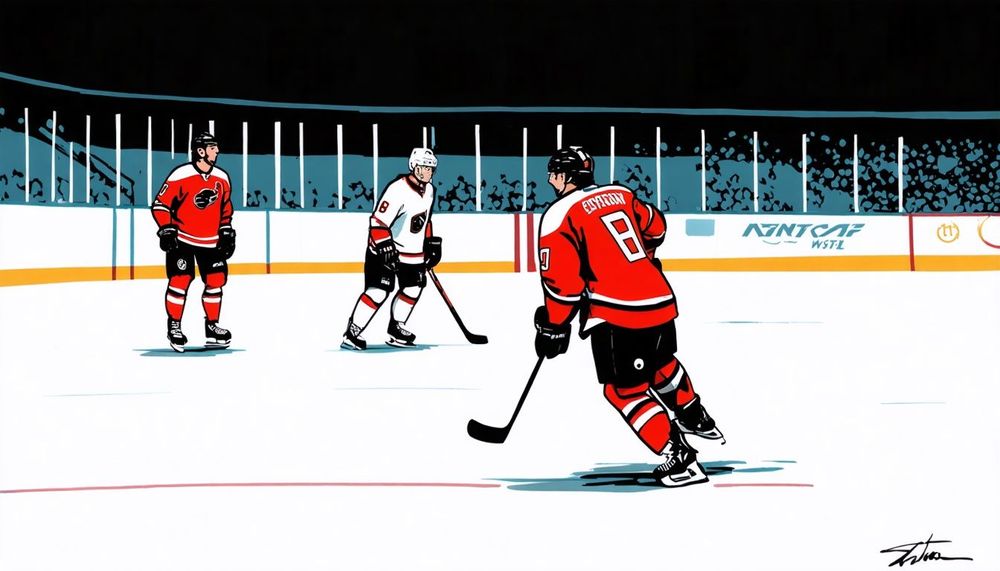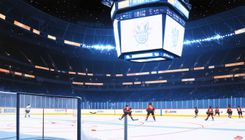NHLs New CBA Framework: A Game-Changer for Prospect Development

The current NHL collective bargaining agreement (CBA) is set to expire in September 2026, a prospect that brings careful consideration to those who have experienced the sport over the past decade. Nevertheless, the NHL owners and the NHL Players Association reached a significant preliminary agreement on the framework of a new deal during the summer. Although the full Memorandum of Understanding has not yet been publicly released, noteworthy changes have emerged, particularly as reported by NHL insider Frank Seravalli.
Among the most striking reforms is the authorization for NHL teams to assign one 19-year-old prospect to their American Hockey League (AHL) affiliate each season. This policy could potentially impact up to 32 players annually. While this number might initially seem modest, it stands to significantly reshape the development landscape for NHL prospects. As it currently stands, the CHL-NHL agreement restricts prospects drafted from one of the Canadian major-junior leagues—the OHL, WHL, or QMJHL—from being assigned to the AHL or ECHL until they either turn 20 years of age or complete four seasons in CHL play. Notably, players drafted from other junior leagues who subsequently join a CHL team do not face this restriction.
The new CBA will come into effect during the 2026-2027 season, meaning the first players eligible for this new assignment policy will be those born in 2007. For instance, Vancouver Canucks prospect Braeden Cootes will turn 19 in February 2026. If the Canucks' management determines that the WHL is no longer optimal for Cootes' development, he could be assigned to the Abbotsford Canucks later that year. The age-based rule, rather than a draft year-based one, indicates that freshly drafted CHL players turning 19 in the fall immediately following the draft could bypass CHL play entirely. An illustrative case is 2026-eligible top prospect Ryan Roobroeck, whose birthday falls in September 2007. If he signs his entry-level contract promptly and stays active in development camp, he may be assigned directly to the AHL instead of returning to the Niagara IceDogs of the OHL. This newly opened path provides much-needed avenues for development for CHL-affiliated prospects.
Historically, this situation has long been valid; approximately ten years ago, discussions emerged regarding the necessity of development alternatives for players like Dylan Strome, who appeared too proficient for the OHL yet was not sufficiently prepared for the NHL—his career trajectory was notably affected. Evidence of this need became apparent when Cole Perfetti played for the Manitoba Moose during the pandemic, which curtailed his major-junior season with the Saginaw Spirit in 2021. Similarly, Shane Wright was granted an exemption to participate with the Coachella Valley Firebirds in the AHL for the 2023-2024 season due to his extensive experience in the OHL since age 15. Both players benefited more from AHL exposure than returning to their junior teams or missing an entire season, which highlights the advantages of this new regulation.
Insider reports describe this provision as 'one player per organization per season,' implying that teams will not be able to assign one 19-year-old prospect temporarily and then transition that player back to junior ranks or call someone else up. However, it is unlikely that teams would face this challenge, given how rare it is for organizations to have multiple 19-year-old prospects simultaneously impacting developmental necessity. This rule change offers a substantial advantage to NHL teams eager to keep top prospects closer within their system for observation and direct development, allowing even smoother call-up opportunities when necessary.
This alteration isn't exactly favorable for CHL organizations, which may find the one-player limit a response to pressure from the CHL itself, as teams may resist losing their elite players. Although NHL teams can only assign one player from the CHL each year, no explicit restriction exists on extracting players from individual CHL teams, which presents a precarious balance for top teams with high-level prospects drafted by various NHL franchises. Furthermore, the impact of the CBA change arrives alongside the potential ramifications of the CHL-to-NCAA rule shift, complicating matters for CHL teams.
Emerging options for top-tier CHL players now allow them to bridge the gap if they find themselves unprepared for the NHL but not interested in returning to the CHL. This adjustment encourages players to engage in professional hockey a year earlier, thereby addressing weaknesses and consistently employing strengths at the pro level instead of being sidelined in the NHL or dominating in junior leagues—both of which could potentially hinder their growth.
An exemplary candidate that would benefit greatly from this new path is the OHL's London Knights, a team consistently loaded with talent. While the Knights have achieved remarkable success at the junior level, their players may not experience the challenges necessary for their development. NHL organizations may opt to move their most promising 19-year-olds from the Knights into the AHL to ensure they encounter greater competitive challenges.
This rule change also presents unintended yet related advantages. As noted by prospect writer Scott Wheeler from The Athletic, numerous agents have expressed that many of their clients would prefer the CHL-to-AHL route, primarily due to the attractive signing bonus associated with entry-level contracts, in contrast to the option of going to the NCAA. A CHL general manager pointed out that depending on the nuances of the CBA language, players could potentially secure their arbitration rights a year earlier by taking this AHL route at age 19, which would be a considerable benefit for them. Achieving arbitration rights sooner would rank among the significant wins for these athletes, rivaling the value of entering professional play a year ahead of schedule.
The allure of signing bonuses for players transitioning from the CHL to the AHL further emphasizes the distinction between these paths compared to attending NCAA programs, especially as recent changes might jeopardize the appeal of NCAA's name, image, and likeness (NIL) financial opportunities. Playing in the AHL comes with the advantages of a guaranteed signing bonus and salary, not to mention the preference among many players to avoid institutional education commitments. Overall, the forthcoming CBA adjustments are poised to alter the trajectory of prospect development within the NHL and reshape the way teams approach young talent in their quest for success.









